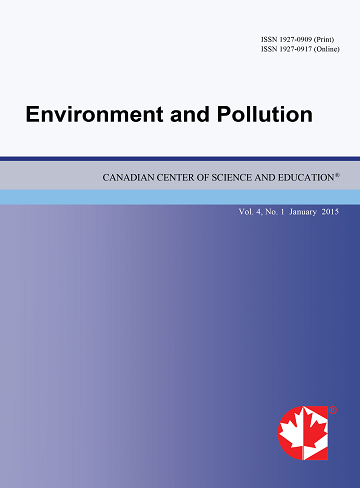Paddy Response to Ozone: A Comparison between an Industrial and Residential Area in Malaysia
- Nurul Mohammed
- Nor Ramli
- Ahmad Yahya
Abstract
Numbers of studies have reported that ozone brings many adverse and crucial effects on paddy. Ozone which is a secondary pollutant is created by the action of the short wavelength radiation from the sun on its anthropogenic precursors. The sources are usually coming from the industrial and vehicular emissions. In Malaysia, paddy fields are located near to the residential areas. The sources of air pollution for these two areas are different, where the industrial area is usually associated with the emissions from the factories and the vehicles while residential area is only focused on the vehicles emissions. Thus, this study was carried out to identify the differences of the paddy reduction between industrial and residential areas in Malaysia by adopting the AOT40 index materials and improvising them depending on the Malaysia actual air quality and paddy data. The results showed that the paddy reduction in the industrial area during main and off seasons was higher compared to the residential area. The industrial area contained more phytotoxic gases than the residential area which lead to the higher reduction in the paddy production. Besides, the paddy reduction during the off season was higher in both areas, compared to the main season. This situation happened perhaps due to the increasing in stomatal conductance and the ozone uptake by leaves during the monsoon season, which resulted in more paddy yield loss.- Full Text:
 PDF
PDF
- DOI:10.5539/ep.v1n2p169
Journal Metrics
h-index (2017): 10
i10-index (2017): 11
h5-index (2017): 9
h5-median (2017): 15
Index
- Academic Journals Database
- Berkeley Library
- CAB Abstracts
- CAS (American Chemical Society)
- CNKI Scholar
- COPAC
- CrossRef
- DTU Library
- Elektronische Zeitschriftenbibliothek (EZB)
- EuroPub Database
- Excellence in Research for Australia (ERA)
- Genamics JournalSeek
- Google Scholar
- Harvard Library
- Infotrieve
- Jisc Library Hub Discover
- JournalGuide
- JournalTOCs
- LOCKSS
- Max Planck Institutes
- Mir@bel
- PKP Open Archives Harvester
- Pollution Abstracts
- Publons
- Pubmed journal list
- ROAD
- Scilit
- SHERPA/RoMEO
- Standard Periodical Directory
- Stanford Libraries
- UCR Library
- Ulrich's
- UniCat
- Universe Digital Library
- UoS Library
- WorldCat
- Zeitschriften Daten Bank (ZDB)
Contact
- Albert JohnEditorial Assistant
- ep@ccsenet.org
